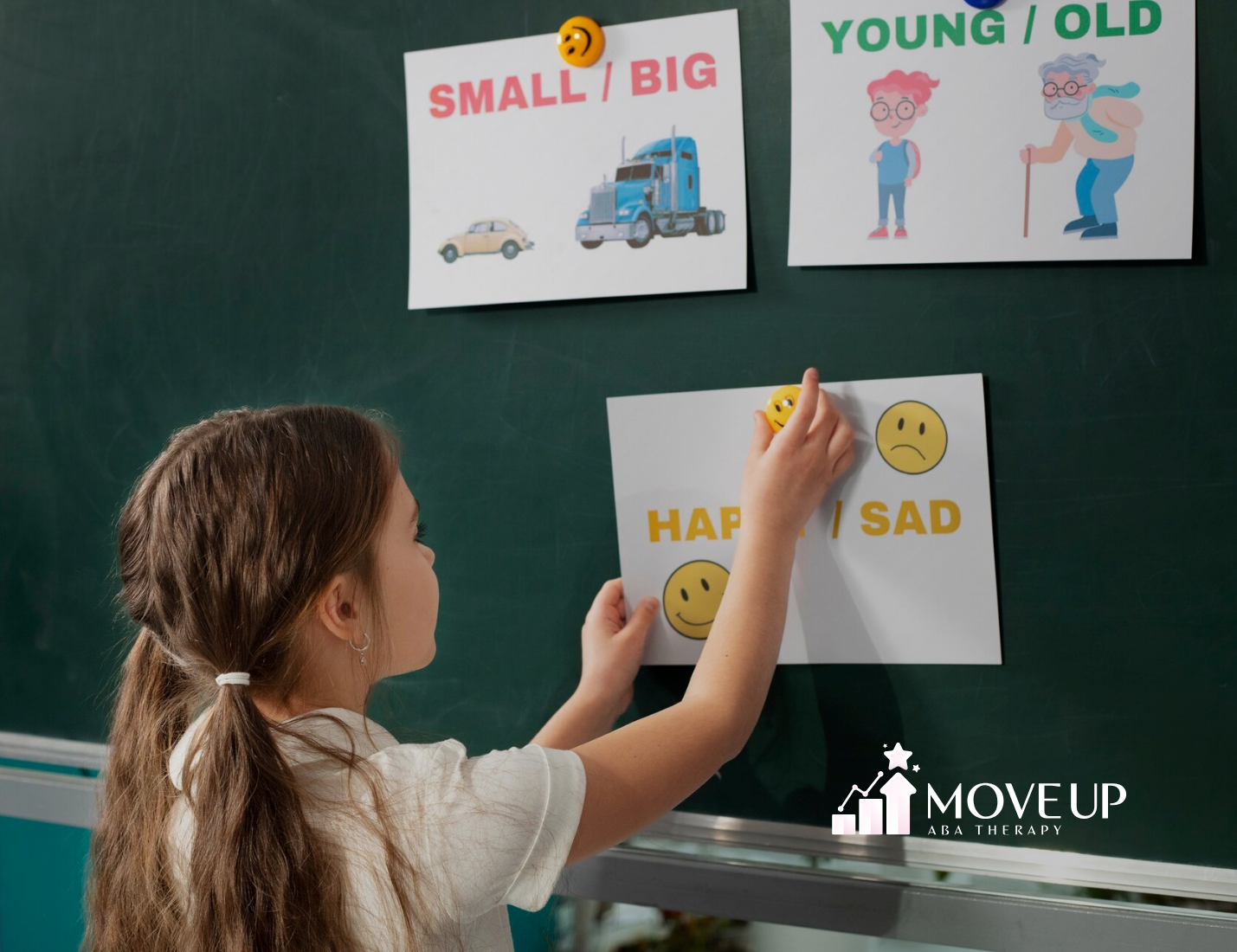Understanding Autism Learning Styles
Importance of Visual Learning
Visual learning strategies have been found to be particularly beneficial for individuals with autism spectrum disorders (ASD). Many individuals with autism are often described as visual learners, meaning they respond better to information presented visually rather than through auditory means. Visual learning strategies can help decrease reliance on auditory processing and communication, which can be challenging for those with autism. By presenting information visually, students can better understand and retain the material, leading to increased independence and reduced dependence on adult prompts and cues.
Visual strategies can also assist in managing behavior and daily routines. For example, using visual aids such as picture cards, charts, and diagrams can help students understand daily routines and expectations, reduce anxiety and frustration, and promote independence. Implementing visual strategies in the classroom can be particularly helpful for students with autism, as it provides a clear and consistent way to process and understand information.
Benefits of Visual Schedules
Visual schedules are a key component of visual learning strategies for individuals with autism. These schedules help in understanding the sequence of daily activities such as playtime, academics, meals, chores, and other tasks using objects, pictures, or written words. Visual schedules can improve a child’s behavior by providing a sense of calmness and easing anxiety associated with an unknown, changing daily schedule. They can also enhance communication skills by allowing children to look at visual representations while instructions and concepts are spoken, supporting their language development.
One research study indicated that toddlers were more likely to learn words when language-stimulating activities were embedded within predictable events, showing the effectiveness of visual schedules in improving attention. Visual schedules can also help students with autism manage their behavior and daily routines, especially since these students may have difficulties processing and understanding language.
| Benefit | Description |
|---|---|
| Reduces Anxiety | Provides a predictable routine, reducing stress and anxiety. |
| Enhances Communication | Supports language development by pairing visual representations with spoken instructions. |
| Promotes Independence | Helps students understand daily routines and expectations, promoting self-reliance. |
| Improves Behavior | Provides a sense of calmness and structure, improving overall behavior. |
For more information on autism learning styles, visit our article on autism learning styles. To create an autism-friendly learning environment, check out our guide on autism-friendly learning environments.
Implementing Visual Strategies
Visual learning strategies for autism can significantly enhance the learning experience for individuals with autism. Implementing these strategies effectively involves creating visual schedules and maintaining consistency in visual supports.
Creating Effective Visual Schedules
Visual schedules are beneficial for individuals with autism as they help in understanding the sequence of daily activities such as playtime, academics, meals, chores, and other tasks using objects, pictures, or written words. To create and use a visual schedule effectively, it is important to follow these steps:
- Assess the Child’s Needs: Understand the specific needs and preferences of the child to tailor the visual schedule accordingly.
- Choose a Method of Display: Decide whether to use a digital or paper-based schedule based on what works best for the child.
- Introduction and Explanation: Introduce the visual schedule to the child and explain how it will be used.
- Consistency in Use: Regularly refer to the schedule during activities to reinforce its use.
- Monitor and Modify: Continuously monitor the child’s response to the schedule and make necessary adjustments.
Visual schedules can improve a child’s behavior by providing a sense of calmness and easing anxiety associated with an unknown, changing daily schedule. They can also enhance communication skills by allowing children to look at visual representations while instructions and concepts are spoken, supporting their language development.
Consistency in Visual Supports
Consistency is key when implementing visual supports for individuals with autism. Consistent use of visual schedules can lead to increased appropriate engagement in play activities, smoother transition periods, greater independence in play behaviors, reduction in challenging behaviors, and decreased latency during transitions.
To maintain consistency in visual supports:
- Regular Updates: Ensure that the visual schedule is updated regularly to reflect any changes in the daily routine.
- Reinforcement: Consistently refer to the visual schedule throughout the day to reinforce its use.
- Adaptation: Be prepared to adapt the visual supports based on the child’s evolving needs and responses.
Visual schedules have been found to be evidence-based practices that increase the academic-related on-task behaviors of individuals with autism. By maintaining consistency in visual supports, caregivers and educators can create a stable and predictable learning environment that benefits individuals with autism.
Visual Learning Strategies for Autism
Visual learning strategies are essential for individuals with autism, as they often respond better to visual information. These strategies can significantly enhance communication skills and reduce dependence on auditory processing.
Enhancing Communication Skills
Visual aids can significantly benefit individuals with autism by helping them communicate, learn, participate, and develop independence. Objects, photos, line drawings, and written words serve as valuable tools that enhance communication skills and foster autonomy among individuals with ASD.
Visual schedules, for instance, can improve a child’s behavior by providing a sense of calmness and easing anxiety associated with an unknown, changing daily schedule. They can also enhance communication skills by allowing children to look at visual representations while instructions and concepts are spoken, supporting their language development. One research study indicated that toddlers were more likely to learn words when language-stimulating activities were embedded within predictable events, showing the effectiveness of visual schedules in improving attention/
| Visual Aid Type | Benefit |
|---|---|
| Objects | Enhance understanding of concepts |
| Photos | Improve recognition and recall |
| Line Drawings | Simplify complex ideas |
| Written Words | Support language development |
Reducing Dependence on Auditory Processing
Visual learning strategies have been found to be beneficial for students with autism spectrum disorders (ASD) as they are often described as visual learners, showing improved responses to information presented visually. These strategies can help decrease reliance on deficits in auditory processing and communication, ultimately increasing student independence while reducing dependence on adult prompts and cues.
Implementing visual strategies in the classroom can be particularly helpful for students with autism. Visual strategies can assist students with ASD in managing behavior and daily routines, especially since these students may have difficulties processing and understanding language.
The Virginia Department of Education has recognized visual strategies for students with autism as evidence-based in the Models of Best Practice in the Education of Students with Autism Spectrum Disorders. This recognition further supports the effectiveness and importance of utilizing visual strategies in the education of students with ASD.
Effective Classroom Strategies
Creating an effective learning environment for students with autism involves implementing strategies that cater to their unique needs. Two key strategies are positive reinforcement techniques and sensory-friendly environments.
Positive Reinforcement Techniques
Positive reinforcement is a powerful tool in promoting desired behaviors and enhancing learning outcomes for students with autism. This approach involves rewarding positive behaviors to encourage their recurrence. Techniques such as token economies, where students earn tokens for specific behaviors that can be exchanged for rewards, are particularly effective.
| Age Group | Positive Reinforcement Techniques |
|---|---|
| 2-5 years | Stickers, small toys, praise |
| 6-10 years | Extra playtime, choice of activity, tokens |
| 11-15 years | Privileges, points towards a larger reward, verbal praise |
Implementing these techniques requires consistency and adaptation to the developmental needs of the students.
Sensory-Friendly Environments
Students with autism often experience sensory sensitivities that can impact their ability to focus and learn. Creating a sensory-friendly environment helps manage sensory overload and supports their learning process. This can include providing tools such as noise-canceling headphones, fidget toys, and weighted blankets.
| Sensory Tool | Purpose |
|---|---|
| Noise-canceling headphones | Reduce auditory distractions |
| Fidget toys | Provide tactile stimulation |
| Weighted blankets | Offer calming pressure |
Additionally, implementing flexible seating options and allowing movement breaks can help students maintain focus and reduce anxiety.
By incorporating these effective classroom strategies, educators can create a supportive and inclusive environment that enhances the learning experience for students with autism.
Collaborative Approaches
Collaboration is key to the success of visual learning strategies for individuals with autism. By involving special education professionals and family members, a consistent and supportive environment can be created, enhancing the overall effectiveness of interventions. Navigate autism care with trusted ABA tools and guidance to strengthen collaboration and ensure every strategy supports meaningful progress.
Involving Special Education Professionals
Special education professionals play a crucial role in implementing visual learning strategies for autism. Their expertise in understanding autism learning styles and their ability to tailor interventions to meet individual needs are invaluable. Collaboration with these professionals ensures that visual supports, such as visual aids, are effectively integrated into the educational setting. These supports have been proven to reduce symptoms associated with cognitive, communication, and social disabilities in individuals with ASD.
Special education professionals can provide guidance on creating and using visual schedules, pairing key vocabulary with visual support, and developing personalized teaching stories. These strategies help students with autism navigate social situations, improve communication skills, and enhance comprehension. For more information on how visual supports can aid in communication, visit our article on auditory learning techniques for autism.
Family Support and Involvement
Family involvement is equally important in the success of visual learning strategies for autism. Families provide the continuity and reinforcement needed to ensure that the strategies used in educational settings are also applied at home. This consistent approach between home and school enhances the overall effectiveness of interventions.
Families can support visual learning by incorporating visual schedules into daily routines, using visual aids to reinforce key vocabulary, and creating personalized teaching stories to address specific social situations. By working closely with special education professionals, families can ensure that the visual supports used are tailored to their child’s unique needs.
| Collaborative Approach | Benefits |
|---|---|
| Involving Special Education Professionals | Tailored interventions, expertise in autism learning styles, effective integration of visual supports |
| Family Support and Involvement | Continuity between home and school, reinforcement of strategies, tailored visual supports |
By fostering collaboration between special education professionals and families, individuals with autism can achieve greater success in their learning and development.
Personalized Teaching Tools
Personalized teaching tools are essential for supporting individuals with autism in their learning journey. These tools can be tailored to meet the unique needs of each individual, enhancing their ability to understand and engage with the world around them.
Teaching Stories for Social Skills
Teaching stories, also known as social stories, are a powerful tool for helping individuals with autism navigate social situations and develop essential social skills. These stories provide a visual framework that outlines expected behaviors, fosters understanding, and reduces anxiety in unfamiliar settings.
Teaching stories are typically personalized to address specific social scenarios that an individual may encounter. By presenting information in a structured and visual format, these stories aid individuals with autism in comprehending social cues and expectations. For example, a teaching story might illustrate how to greet a friend, take turns during a game, or ask for help in a classroom setting.
| Scenario | Expected Behavior | Visual Support |
|---|---|---|
| Greeting a Friend | Say “Hello” and smile | Picture of two people shaking hands |
| Taking Turns | Wait for your turn and listen | Image of children taking turns |
| Asking for Help | Raise hand and say “I need help” | Icon of a raised hand |
By using teaching stories, educators and caregivers can provide clear and consistent guidance, helping individuals with autism feel more confident and prepared in social situations.
Pairing Vocabulary with Visual Support
Pairing key vocabulary with visual support during reading is particularly beneficial for individuals with autism. This strategy helps students identify crucial elements of the text, emphasizing the importance of specific words and enhancing comprehension.
By incorporating symbols or pictures alongside key vocabulary, individuals with autism can better grasp social narratives and improve their interactions with peers and adults. For example, a reading passage about a trip to the zoo might include pictures of animals next to their names, helping the reader associate the word with the image.
This visual strategy aids in triggering the recognition that specific words are crucial, leading to enhanced comprehension. By associating key words with visual representations, individuals with autism are better able to grasp the meaning of the text and engage more fully in the reading process.
Incorporating personalized teaching tools such as teaching stories and visual vocabulary support can significantly enhance the learning experience for individuals with autism. These strategies not only improve comprehension and communication skills but also foster a supportive and inclusive learning environment.
Final Thoughts
Incorporating visual learning strategies into the education of individuals with autism can make a powerful difference in their ability to understand, communicate, and thrive. From visual schedules to personalized teaching tools and classroom strategies, these approaches support independence, reduce anxiety, and enhance overall learning experiences.
At Move Up ABA, we specialize in creating individualized ABA therapy programs that include effective visual supports tailored to your child’s needs. Ready to give your child the tools to succeed? Contact Move Up ABA today to learn how we can support your child’s learning journey through personalized, compassionate care.
Sources:
- https://digitalshowcase.lynchburg.edu/lc-journal-of-special-education/vol6/iss1/4/
- https://www.researchgate.net/publication/327064819_Predictable_Events_Enhance_Word_Learning_in_Toddlers
- https://www.autism.org.uk/advice-and-guidance/topics/communication/communication-tools/visual-supports
- https://www.autismspeaks.org/tool-kit/atnair-p-visual-supports-and-autism







